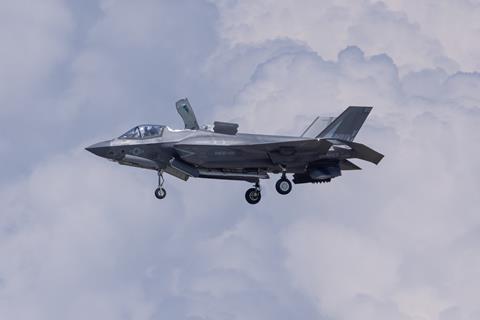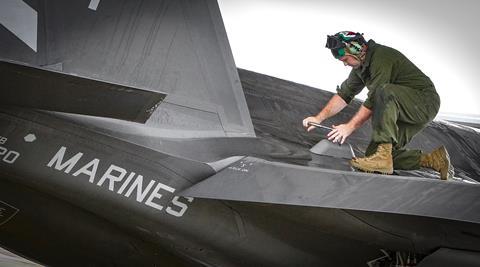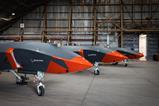The US military is looking for a missing fighter jet and has asked the public for help.
A US Marine Corps (USMC) Lockheed Martin F-35B stealth fighter went missing on 17 September after the craft’s pilot ejected over South Carolina. Although the aviator was safely recovered, the service has been unable to locate the advanced aircraft, which costs more than $100 million.

Joint Base Charleston said on 17 September that it was working with nearby Marine Corps Air Station Beaufort, which is home to the USMC’s F-35B flight demonstration team, to locate the jet that was “involved in a mishap”.
“The pilot ejected safely,” JB Charleston said on the social media site X. “If you have any information that may help our recovery teams locate the F-35, please call the base defence operations centre.”
The facility says it is coordinating with civil authorities at the Federal Aviation Administration, with the search focusing on the area north of the Charleston, South Carolina base – including Lake Moultrie and Lake Marion.
The two bodies of water are approximately 100 miles (160km) northeast of MCAS Beaufort.
Although fighter jets often return to Earth soon after a pilot ejects – as was the case with a privately owned MiG-23 that crashed during an August air show in Michigan – USMC officials say they have not received any evidence that the missing F-35B has actually crashed.
So-called “zombie” fighters have been known to continue flying for significant periods of time after a pilot ejection. In 1989, a Soviet MiG-23 crashed in Belgium after the pilot ejected several hundred miles east over Poland.
In June, a Cessna Citation V business jet flew for over an hour on autopilot, after the crew were incapacitated. All four people aboard were killed when the jet ultimately crashed in rural Virginia.
Several factors are complicating the missing F-35 search effort.
The pilot apparently enabled the jet’s autopilot system prior to ejecting, according to Pentagon. The stealth fighter’s transponder is also not transmitting, for an unknown reason.

It remains unclear if the stealthy nature of the F-35 airframe is complicating the search.
“The aircraft is stealth, so it has different coatings and different designs that make it more difficult than a normal aircraft to detect,” Jeremy Huggins, an official at JB Charleston, told The Washington Post on 17 September.
F-35s typically employ radar reflecting devices called Luneburg lenses while operating in civil airspace to create an exaggerated radar signature.
The lenses, which resemble small bollards, are affixed on the fuselage above and below the wing. They can also be used to distort the F-35’s highly-sensitive radar cross section when operating near unfriendly aircraft and radars, such as those belonging to Russia, China or Iran.
If the USMC F-35 in South Carolina was operating with a stealthy profile, it may be contributing to the puzzling lack of tracking data. The Pentagon has not released any information on what issue prompted the pilot to eject, which may also be related.
The Lake Moultrie area where the Pentagon is focusing its search effort sits only some 50 miles from the Atlantic Ocean, with rural national forest area in between.
The latest mishap continues a string of aviation accidents involving the USMC. The corps’ acting commandant ordered a service-wide safety review on 29 August, following a fatal crash of a Bell Boeing MV-22 Osprey tiltrotor in Australia on 27 August.
A US military pilot ejected from an F-35B Lockheed’s Fort Worth, Texas F-35 delivery centre in December 2022, following a failed vertical landing attempt.
The USMC, which is the only US military service to operate the short rake-off and vertical landing (STOVL) F-35 variant, sends pilots to Lockheed to perform STVOL test flights before new jets are turned over to the military.
The cause of that crash was later determined to be a rare harmonic resonance phenomenon originating in the fighter’s Pratt & Whitney F135 engine.
The Pentagon cleared the enginemaker to resume deliveries of new F135 powerplants in February, after the source of the issue had been identified and remedied.































